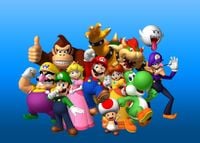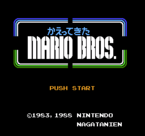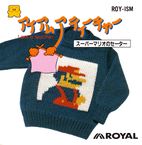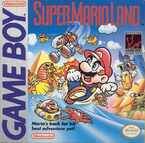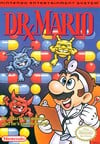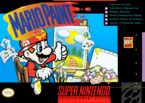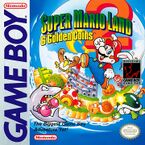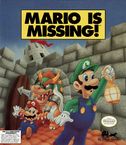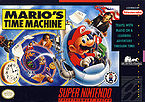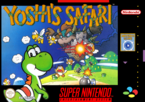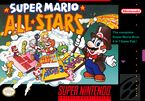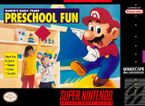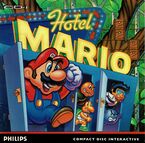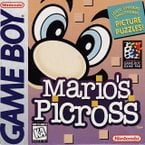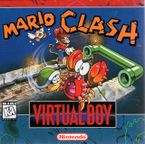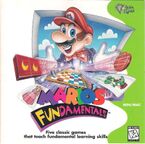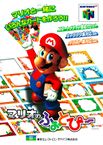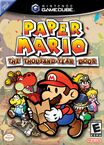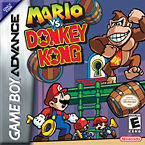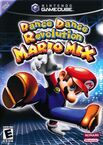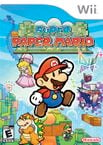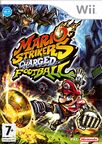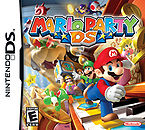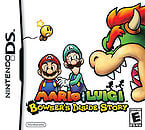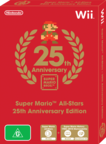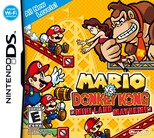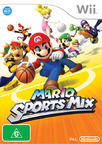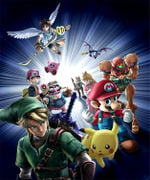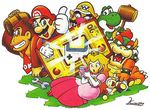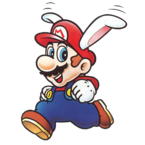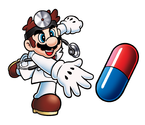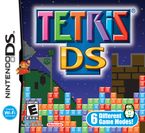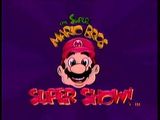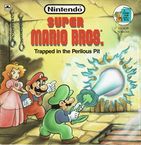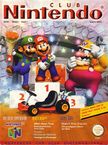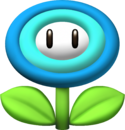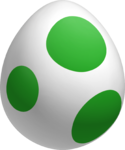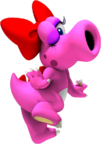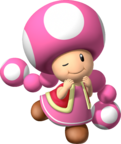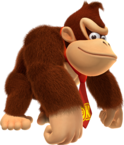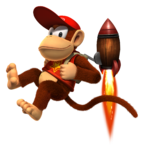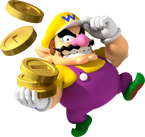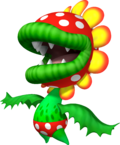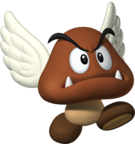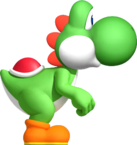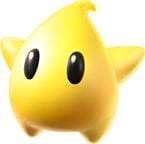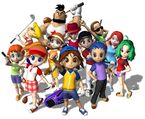Super Mario (franchise): Difference between revisions
| Line 815: | Line 815: | ||
[[File:LM Luigi Flee.jpg]] | [[File:LM Luigi Flee.jpg]] | ||
The [[Luigi's Mansion series]] is a new series that officaly started with the announment of the Luigi's Mansion 2. It is the first series overall to have Luigi be the main characther. It involes Luigi sucking up ghost with the ''[[Poltergust 3000]]'' in usually, a haunted mansion setting. It is a popular series due to the first game. A new installment ''[[Luigi's Mansion 2]]'' has been announced for 3DS | The [[Luigi's Mansion series]] is a new series that officaly started with the announment of the Luigi's Mansion 2. It is the first series overall to have Luigi be the main characther. It involes Luigi sucking up ghost with the ''[[Poltergust 3000]]'' in usually, a haunted mansion setting. It is a popular series due to the first game. A new installment ''[[Luigi's Mansion 2]]'' has been announced for 3DS | ||
*''[[Luigi's Mansion]]'' | *''[[Luigi's Mansion]]'' | ||
*''[[Luigi's Mansion 2]]'' | *''[[Luigi's Mansion 2]]'' | ||
===Crossovers=== | ===Crossovers=== | ||
Revision as of 16:06, June 7, 2011
It has been requested that this article be rewritten and expanded to include more information.
Template:Articleabout Template:Series-infobox
The Mario series is a long-running video game series published by the popular gaming company, Nintendo. The Mario series has been running for more than a quarter of a century, and in its lifespan has released more than two hundred video games. And it is currently the best selling video game franchise in history with over 240 million combined units sold.[1]
The series started out in 1981, with the arcade video game, Donkey Kong, and has since then took off into its own huge franchise. Originally created by Shigeru Miyamoto, Mario is the main protagonist throughout most of the series; the main antagonist of the series is Bowser, the King of all Koopas. The Mario series has contained many different genres of games, from platformers to role-playing games, and from puzzle games to party games. The most popular games in the series consist of what is known as the main series or the Super Mario series which consists of 2D and 3D platformers, at least one per home console and one per handheld (bar the Game Boy Advance).
The Mario series has been released on a large array of systems, including home consoles, handheld game systems, and even personal and Macintosh computers. Originally starting out with an 8-bit game, the Mario series has gone through many graphical changes throughout the years. The series has spawned numerous sub-series, including the Mario Kart and Mario Party series; it has also taken a large part in the story line to its partner series, Yoshi, Donkey Kong, and Wario.
Mario games
1981-1989
| Title, original release and system | Synopsis and Ratings |
|---|---|
| Donkey Kong
|
In 1981, the Mario series had officially started with the release of Shigeru Miyamoto's creation - Donkey Kong. Originally released in the arcades, Donkey Kong became a very popular game amongst gamers, eventually spawning many remakes and ports. In 1981, Mario had yet to be called so -- rather, he was called "Jumpman" during that brief era; it was only a few years later that Mario Segale would rename the aforementioned character to "Mario". Since then, the name has become very popular among the video game community; he is considered to be one of Nintendo's mascots. Since the release of Donkey Kong in 1981, Mario has appeared in over 200 games, and has been referenced in several more. |
| Template:ReleasedateArcade Machine | (Ratings unavailable) |
| Mario Bros.
|
Two years later, in 1983, Mario got his own game - using his current name. In the game Mario Bros., Mario and his brother Luigi - who first debuted in this game - were traversing the creature-infested depths of the sewers. Mario and Luigi had to fight such creatures as Fighter Flys, Shellcreepers and Sidesteppers; but with the help of a POW Block, things could get easier. Mario Bros. is the 1st Mario game with infinite levels (and last.) |
| Template:ReleasedateArcade Machine | (Ratings unavailable) |
| Golf
|
Before the release of Super Mario Bros., Mario appeared in his first ever sports game: Golf — it was released in 1984. This game's gameplay is relatively simple: the player must strike the ball with the correct amount of force in order to get a good shot. The more good shots and the player gets, the more points he or she is likely to earn. Golf was the very first game in the Mario Golf series to ever be released. Mario was the only playable character, and even he is not seen in his traditional clothing. |
| Template:ReleasedateNES | (Ratings unavailable) |
| Wrecking Crew
|
In June of 1985, Nintendo released Wrecking Crew in Japan for the Famicom Disk System, then later that year for the NES. The concept of the game revolved around Mario (and Luigi, if a second player were to join the game) who were in the middle of a demolition site. While at the site, they had to break down all of the concrete walls with their hammers found in each level. The player would encounter several enemies, none of which could be defeated with the hammer that Mario (or Luigi) would carry. Rather, they would have to trap enemies under steel drums. The game also featured a new character: Foreman Spike, who would occasionally appear to outdo Mario at breaking down the concrete walls, and who could push Mario off of ledges. The game also featured a custom level creator, the first game in the Mario series to ever do so. |
| Template:ReleasedateFamicom | (Ratings unavailable) |
| Super Mario Bros.
|
On September 13, 1985, Mario starred in his very first game outside of the arcades. With the release of Super Mario Bros., the NES was an extreme success. Mario, and his brother Luigi, had to set out on a massive adventure across the Mushroom Kingdom to rescue Princess Toadstool and the Mushroom Retainers from the evil King Bowser Koopa. After traversing through eight massive worlds, filled with enemies, the brothers eventually reached Bowser's Castle, finally rescuing Princess Toadstool. Super Mario Bros. eventually became the best-selling video game for the NES in 1999.[2] |
| Template:ReleasedateNES | (Ratings unavailable) |
| Super Mario Bros. Special
|
Super Mario Bros. Special is the true "lost" game of the series, which was made by Hudson Soft for the PC88 series of Japanese PCs and officially licensed by Nintendo. SMB Special was the very first licensed sequel to Super Mario Bros. to appear, released a few months before Super Mario Bros.: The Lost Levels in 1986. While superficially very similar to the original Super Mario Bros., the game features completely-original levels and lacks a screen-scrolling mechanism. Jumping and running physics also differ from the original, providing a more challenging experience than Super Mario Bros. Due to the PC88's technology being slightly inferior to that of the NES/Famicom, the graphics and audio differ slightly from the original NES game as well, although they are closely emulated, and does not include Luigi or a multiplayer mode. |
| Template:ReleasedatePC88 | (Ratings unavailable) |
| Super Mario Bros.: The Lost Levels
|
After the extreme success of Super Mario Bros., Super Mario Bros.: The Lost Levels was released just one year later in Japan. The gameplay and story were almost identical to its predecessor, but it was not released in the United States due to its extreme difficulty.[3] Some gameplay elements were changed slightly, such as Bloopers flying in midair, wind to help the player jump across abysses, and other minor changes. |
| Template:ReleasedateNES | (Ratings unavailable) |
| Return of Mario Bros.
|
Kaette Kita Mario Bros. (translated as Return of Mario Bros., but also commonly known as Mario Bros. Returns in English-speaking countries) is a Japanese game for the Famicom Disk System. The game has several modes that can be accessed from the main menu. The "Original Mario Bros." mode plays, for the most part, similarly to the Mario Bros. game that was released to arcades. However, there are several differences: some new levels were added, Mario and Luigi can now change direction in mid-air (much like modern remakes), the graphics and music were improved, high scores can now be saved and advertisements appeared between levels. Some were for upcoming Mario games, such as Super Mario Bros. 3; others were for the Japanese food company Nagatanien, who sponsored this game. There is also a two-player version of this mode, in which both players are active at the same time. |
| Template:ReleasedateFamicom Disk System | (Ratings unavailable) |
| Super Mario Bros. 2
|
Two years later in 1988, Nintendo released yet another Mario game for the NES - Super Mario Bros. 2. Despite the fact that the game's title has "2" in it, it was not the direct sequel to Super Mario Bros. — Super Mario Bros.: The Lost Levels was, however it was not released outside of Japan. In this game, Mario, Luigi, Princess Toadstool, and Toad had to save the dream world of Subcon from the diabolical Wart. After fighting their way through seven strange worlds, they eventually saved Subcon. Super Mario Bros. 2 would eventually be released in Japan as Super Mario USA. |
| Template:ReleasedateNES | (Ratings unavailable) |
| Super Mario Bros. 3
|
Another two years had passed by the time the next mainstream Mario game had been released: Super Mario Bros. 3. This was by far, the most expansive Mario game on the NES, as it featured many levels, items, and enemies. Bowser and his seven Koopalings wreaked havoc across the Mushroom World after turning all of the Mushroom Kings into various animals. Mario and Luigi had to traverse through many worlds, castles, seas, forests, and deserts to fix the wrongs the Koopalings had caused. Eventually, the brothers reached Bowser and defeated him, rescuing Princess Toadstool once again. |
| Template:ReleasedateNES | (Ratings unavailable) |
| I Am A Teacher: Super Mario Sweater
|
I Am a Teacher: Super Mario Sweater is a 1988 Famicom Disk System game released only in Japan. It was designed by Royal industries Co. Ltd., a Japanese appliance and sewing machine company. The company realized that they could make a lot of money by releasing a sweater-design program, which led to this game. Players could design the sweater they want, and the company would make a real-life version for 2,900 Yen (about $24). |
| Template:ReleasedateFamicom Disk System | (Ratings unavailable) |
| Super Mario Land
|
Mario made the jump to Nintendo's first handheld system in 1989, with the release of Super Mario Land. Selling a total of 18.06 million copies[4], it became the bestselling video game not to be bundled with a system in history. In this game, Mario had to traverse across the four worlds of Sarasaland to save the Princess Daisy from the alien Tatanga. With the help of new features such as the Superball, Marine Pop, and the Sky Pop, Mario was able to stop Tatanga and save Daisy. |
| Template:ReleasedateGame Boy | (Ratings unavailable) |
1990-1999
| Title, Original Release, and System | Synopsis and Ratings |
|---|---|
| Super Mario World
|
One year after the release of Super Mario Bros. 3, Super Mario World had been released on a whole new home console — the Super Nintendo. It was with this game that the Mario series had been upgraded from 8-bit to 16-bit graphics. Though the games' graphics would later be revolutionized once again, this was indeed a huge step at the time. During the story of Super Mario World, while Mario, Luigi, and Princess Toadstool were vacationing in Dinosaur Land, Bowser and his seven Koopalings once again kidnapped the Princess. With the help of the Yoshis and Dolphins, the brothers traversed across the vast area of Dinosaur Land. As they made their way to Princess Toadstool, they thwarted each Koopaling who stood in their way until they reached Bowser. Once again, Bowser had been defeated and Princess Toadstool had been rescued. |
| Template:ReleasedateSNES | (Ratings unavailable) |
| Dr. Mario
|
Dr. Mario was the first game in the Dr. Mario series; it was released for the NES in 1990. The game brought the basic concept of the series to the players' attention immediately, as they would start the game off having to reorganize falling Megavitamins in order to eradicate viruses from the screen. Once all viruses has been eliminated, the player would move on to the next level. As the game progressed, each level rose in difficulty, providing more viruses for the player to eliminate and less space to maneuver the Megavitamins in. Dr. Mario was ported and remade many times after its original release. |
| Template:ReleasedateNES | (Ratings unavailable) |
| Mario Paint
|
Released on the SNES in 1992, Mario Paint was highly interactive, even utilizing the SNES Mouse. The game had a series of four sequels on the failed N64 add-on, the Nintendo 64DD, known as Mario Artist. The game's title screen was interactive, as each letter of the words 'Mario Paint' would cause a different effect on the title screen. In Art Mode, the player could draw several different creations on a canvas displayed on-screen; these drawings would have elements that were highly influenced from Super Mario World. The game also featured the ability to make Stamps, which were a type of sprite that the player could create in a separate game mode. In addition, the player could create their own music samples using the game's Music Mode. |
| Template:ReleasedateSNES | (Ratings unavailable) |
| Super Mario Bros. & Friends: When I Grow Up
|
Super Mario Bros. & Friends: When I Grow Up is a DOS computer game featuring Mario and friends released in 1992. It is an Electric Crayon game and was published by Merit Software. The game is essentially a coloring book on the computer. A few pages have animated sequences. Career themed pages include Policeman, Attorney/Judge, Chef/Waiter, Business Executive, Ballet Dancer, and Homemaker. Characters in the game include Mario, Luigi, Peach, Toads, and Bowser. Link appears, too. |
| Template:Releasedate MS-DOS | (Ratings unavailable) |
| Super Mario Land 2: 6 Golden Coins
|
Three years later, Mario reappeared on the Game Boy with the release of Super Mario Land 2. Super Mario Land 2 was less popular than its predecessor[5], Super Mario Land. This story picked up right where the last one left off. After rescuing Princess Daisy, Mario returned to his castle, only to find that it had been taken over by his old nemesis, Wario. Mario must collect six golden coins scattered across Mario Land in order to regain access to his estate and defeat Wario. |
| Template:ReleasedateGame Boy | (Ratings unavailable) |
| Super Mario Kart
|
Almost two decades ago, in 1992, the Mario Kart series had begun with the release of Super Mario Kart. It was one of the first games ever to be made that was 2-dimensional with 3-dimensional renderings. The game featured eight playable characters: Mario, Luigi, Princess Toadstool, Yoshi, Toad, Bowser, Donkey Kong Jr., and Koopa Troopa. Though the player could not pick from a selection of karts, each character was pre-assigned with a kart, each with a different weight, speed, and acceleration. This game was also heavily influenced by Super Mario World, as many of the racecourses took place somewhere within the borders of Dinosaur Land; the game also featured the Cape Feather, which was found in Super Mario World. |
| Template:ReleasedateSNES | (Ratings unavailable) |
| Mario is Missing!
|
In 1992, Nintendo released their first ever Mario edutainment game: Mario is Missing!. The game was originally released for MS-DOS, but was later released on the NES, SNES, and then released again on the PC. The game was also the first to feature Luigi as the main playable protagonist. The story revolves around Bowser, who has kidnapped Mario and taken him to his fortress in Antarctica. Bowser then plans to steal several shipments of hair dryers in order to melt the icy continent and flood the world. Luigi must then travel through several locations on Earth in order to retrieve several artifacts to help him rescue his brother. The game was designed to be simple in battle, as the enemies and bosses found throughout the game could not harm the player. |
| Template:ReleasedateMS-DOS | (Ratings unavailable) |
| Mario's Time Machine
|
Mario's Time Machine is yet another edutainment game in the Mario series. It was released in 1993 for NES, SNES, and PC. The game is an attempt to teach children various aspects of world history. As such, Mario must use his time machine to travel throughout various time periods in history, dating back to 80,000,000 B.C., all the way up to 1989 A.D.. Mario must collect artifacts from each period of time he visits in order to progress through the game. Should the player fail at retrieving the artifacts in the wrong order, the ending will show Bowser escaping to Paradise, requiring the player to start the game over completely; however, if the game is completed in an orderly fashion, the player will win the game. This game is also notable for being the first and only game in the Mario series that has Mario speaking in full phrases. |
| Template:ReleasedateSNES | (Ratings unavailable) |
| Mario & Wario
|
Mario & Wario is a puzzle game only released in Japan, on the Super Famicom in 1993. The game featured three different modes of difficulty and ten levels in which the player had to guide Peach (easy), Mario (intermediate), or Yoshi (hard) to reach Luigi, who is the goal of each level. After Wario drops a random item on the player's head, be it a bucket or a jellyfish, Wanda the fairy must then help guide the player to Luigi in order to advance to the next level. The game was one of very few titles to utilize the SNES Mouse. |
| Template:ReleasedateSuper Famicom | (Ratings unavailable) |
| Yoshi's Safari
|
In 1993, Nintendo released Yoshi's Safari for the SNES. The game carried over many aspects of Super Mario World, featuring many of the same bosses and enemies (such as Chargin' Chucks), and having Mario ride Yoshi throughout the game. Yoshi's Safari is notable for being the only shooter in the Mario series, utilizing the Super Scope to facilitate gameplay. The story revolved around Mario and Yoshi traveling through the vast realms of Jewelry Land. Their mission was to save King Fret and his son, Prince Pine, from the diabolical Koopalings who were terrorizing the land. |
| Template:ReleasedateSNES | (Ratings unavailable) |
| Super Mario All-Stars
|
In 1993, a compilation of NES Super Mario Bros. games had been released. The game was titled Super Mario All-Stars. The game contained Super Mario Bros., Super Mario Bros.: The Lost Levels (the first U.S. release of that game), Super Mario Bros. 2, and Super Mario Bros. 3. The games featured updated graphics to fit the 16-bit memory of the Super Nintendo. Not many other changes had been made to the games. One year later, in 1994, a second installment called Super Mario All-Stars + Super Mario World had been released. As its name implies, it has all the previously mentioned NES games as well as the addition of Super Mario World. A Wii remake of the original compilation game called Super Mario All-Stars - 25th Anniversary Edition was released in 2010. |
| Template:ReleasedateSNES | (Ratings unavailable) |
| Wario's Woods
|
Wario's Woods is a puzzle game released originally for the SNES in 1993; it was later released for the NES in 1994. The game features Toad as the main protagonist, the only Mario game to ever do so. As Toad was out walking one day, he accidentally ran into a large forest owned by the evil Wario. Wario was sending out many of his monsters to attack the Mushroom Kingdom. With the help of Birdo and Wanda, Toad had to protect the Mushroom Kingdom from the monsters' inevitable infiltration. |
| Template:ReleasedateNES | (Ratings unavailable) |
| Mario's Early Years!
|
Between September and November 1994, Nintendo released the Mario's Early Years! edutainment series: Fun with Numbers, Fun with Letters and Preschool Fun in each of the three months respectively. |
| Template:ReleasedateSNES | (Ratings unavailable) |
| Hotel Mario
|
In 1994, Hotel Mario was released for the Philips CD-i, and was developed by Philips Media. The game was rather obscure and received very little attention due to the lack of interest in the Philips CD-i. The plot deals with Bowser and his seven children, the Koopalings, who have once again taken over the Mushroom Kingdom; this time, they built a series of hotels, of which, one is hiding Princess Peach. Once Mario and Luigi become aware of this, they set out on a mission to stop Bowser and his children once more and rescue the Princess. The main goal of each stage is to close all of the doors on each floor in order to progress to the next stage or location. However, enemies commonly interfere with the player's goal, thus reopening the doors, requiring them to be closed once more. The name of each hotel is a portmanteau on a Real World hotel, such as the Ritz Carlton hotel. |
| Template:ReleasedatePhilips CD-i | (Ratings unavailable) |
| Undake30 Same Game
|
UNDAKE30 Same Game Taisakusen Mario Version was a puzzle game that was released in 1995 in Japan. The game could be controlled with a standard joypad or the Super Famicom Mouse and was similar to the card game Monte Carlo. The game centers around a large playing field composed of a random arrangement of Mario Heads, Coins, Yoshi Eggs, Fire Flowers, and Super Mushrooms. If two or more icons are connected, the player can move the cursor and click to make all the connected icons disappear. Now the icons above fall down and the Player can clear even more icons. Also, there is an undo move that allows the Player to take back the last move, and move back as far as wanted. Once the entire grid is clear, the game ends. The game was developed by Hudson Soft. |
| Template:ReleasedateSuper Famicom | (Ratings unavailable) |
| Satella-Q
|
Satella-Q is a series of quiz game events released exclusively for Japan for the Satellaview (an add-on for the Super Famicom) in 1995. Within the game, Toad was featured as the main and primary character as he guided the players through the number of quizzes and minigames that were available. Each installment of the game series was divided into episodes and each was released at different times during the same year of the game's release. At the moment, it is also the longest-running of the Satellaview broadcasts to this point. |
| Template:ReleasedateSatellaview for the Super Famicom | (Ratings unavailable) |
| Mario's Picross
|
In 1995, Nintendo released Mario's Picross for the Game Boy. Mario's Picross was a puzzle game that spawned a sub-series containing two additional games: Picross 2 and Super Mario Picross. The game featured a paint-by-numbers puzzle system, in which there was a 100-square screen for the player to maneuver around. Once the puzzle was completed, the player would advance to the next one, which would increase in difficulty somewhat. A total of 192 puzzles could be found in the game, found throughout three different modes: Easy Picross, Kinoko, and Star — each of which contained 64 puzzles. There was also a time-trial mode, which contained 64 puzzles, (that were previously beaten), that would appear at random. |
| Template:ReleasedateGame Boy | (Ratings unavailable) |
| Mario Clash
|
Mario Clash is an obscure Mario Bros. remake for Virtual Boy. In the game, the player must use Koopa Shells to hit enemies and knock them out of platforms, so they can progress. New enemies not present in Mario Bros. appeared in this game, like Thornys, Lobbs and Snakes. |
| Template:ReleasedateVirtual Boy | (Ratings unavailable) |
| Mario's Tennis
|
In 1995, the first installment to the Mario Tennis series was released —Mario's Tennis. It inspired the creation of several more games in the series, (the next being Mario Tennis for the Nintendo 64). The game had seven playable characters, all of which were featured in Super Mario Kart, with the exception of Bowser who did not appear in this game. |
| Template:ReleasedateVirtual Boy | (Ratings unavailable) |
| Mario's FUNdamentals
|
Mario's FUNdamentals was an obscure Mario video game for young children released in 1995. Children could play games like "Go Fish", "Checkers", "Backgammon", "Dominoes", or "Yahtzee". Depending on the game, the player either plays against Mario or Bowser. It should also be noted that this is the first Mario game in which Charles Martinet provided Mario's voice, not to be confused with Mario Teaches Typing. |
| Template:Releasedate MS-DOS | (Ratings unavailable) |
| Super Mario RPG: Legend of the Seven Stars
|
The first Mario RPG to be made was one of the last Super Nintendo games to be released — Super Mario RPG: Legend of the Seven Stars. To many, it was a success, as it received great reviews amongst players.[6] This Mario game also introduced the turn-based battle system to the series. HP, Speed, Attack, Defense, Magic Attack, and Magic Defense were all features that Mario, his partners, and enemies all carried. In the story, Princess Toadstool was kidnapped once again by King Bowser; Mario set off on a brief adventure to rescue her. After battling Bowser, Mario did not get the chance to fully rescue the princess. A large sword fell from the sky and plummeted straight into Bowser's Castle, destroying the Star Road, while sending the three into different directions. After Mario wakes up back in the Mushroom Kingdom, he sets out on an adventure to find out what happened all the while still having to rescue Princess Toadstool. Along his journey, Mario meets characters such as Mallow and Geno, all of whom join him in hopes of defeating Smithy, the cause of the Mushroom Kingdom's current state. This is the first game in which Bowser allied with Mario, and in which Bowser and Princess Toadstool were playable characters. |
| Template:ReleasedateSNES | (Ratings unavailable) |
| Super Mario 64
|
Not long after the release of Super Mario RPG: Legend of the Seven Stars, Nintendo released a new system and a new game — Super Mario 64. The game was a success. It was the first fully 3-Dimensional Mario game to ever be made, thus revolutionizing the appearance of Mario games to date. The game sold over eleven million copies by 2007.[7] Because the game had such amazing success, people began to create rumors of glitches[8] and unlockables in the game. Perhaps one of the most notable rumors was that Luigi was a playable character in the game.[9] This was also the second game to call Princess Peach by her current name (with Yoshi's Safari being the first). In the game, Mario was invited to Princess Peach's Castle to eat a cake she had baked. However, when Mario arrived at her castle, he had discovered that Bowser had taken it over and had stolen almost all of the castle's Power Stars— there were some which he did not know existed. As Mario traversed through fifteen different painting worlds, he eventually recovered enough Power Stars to battle Bowser and take back the castle, freeing Peach from her stained-glass prison. |
| Template:ReleasedateNintendo 64 | Gamespot - 9.4: Superb |
| Excitebike: Bun Bun Mario Battle Stadium
|
Excitebike: Bun Bun Mario Battle Stadium is an Super Famicom racing game released in 1997. It is an obscure remake of the NES title, Excitebike. In this game, all human bikers were replaced with Mario characters. The game was somewhat based off of the Mario Kart series. The characters were Mario, Luigi, Yoshi, Toad, Wario and Princess Peach. The players could download more parts of the game via Satellaview. |
| Template:Releasedate Super Famicom | (Ratings unavailable) |
| Wrecking Crew '98
|
In 1998, Wrecking Crew '98, the Japan-only sequel to Wrecking Crew was released. The game had similar mechanics to that of its prequel, as the player had to line up panels in a color-coded manner in order to get rid of them; there was also the option to smash them with a hammer. The game also featured the ability to rain a large amount of panels on the opponent, causing them to have more difficulty clearing the stage. The story tells that Mario, on his way home, discovers Bowser on a campaign to build several high-rises in the Mushroom Kingdom, which are destroying the plant life of the area. As Mario attempts to trump Bowser's plot, he must fight his old nemesis, Foreman Spike, along with other villains such as Eggplant Man. |
| Template:ReleasedateSuper Famicom | (Ratings unavailable) |
| Mario no Photopi
|
Mario no Photopi is a creativity game released for the Nintendo 64 in 1998 only in Japan. The game's cartridge has two slots for SmartMedia cards in the top, allowing to import digital photos and other images and for transfer between the cards. The pictures can be edited and decorated with font, artwork from the Mario series, borders and other graphics. |
| Template:Releasedate Nintendo 64 | (Ratings unavailable) |
| Mario Party
|
In 1999, Nintendo released the first Mario Party game to ever be made — Mario Party. The game was a whole new aspect on multi-player capabilities in the Mario series; most games up until now mainly featured a 2-player versus mode, with the exceptions of a few sports spin-offs. The game mechanics worked near-identically to that of a board game: players would rove around the board, moving from space to space, and hitting a Dice Block in order to move said spaces. The players could earn coins by playing and winning mini-games; with a certain amount of coins, the players could by stars. Despite the fact that this was a party game, it also had a single-player mode, in which the player would play against CPUs. There were six playable characters in the game: Mario, Luigi, Peach, Donkey Kong, Yoshi, and Wario. Each character had one board modeled after them, in addition to two other boards in the game — one dedicated to the game's antagonist, Bowser, and the other unlockable after collection one-hundred stars. |
| Template:ReleasedateNintendo 64 | Gamespot - 7.2: Good |
| Super Mario Bros. Deluxe
|
In that same year, Nintendo released another hit, Super Mario Bros. Deluxe. It sold a total of 2.8 million copies in the United States alone.[10] The game was one of the highest rated games according to Gamespot and IGN. This game, though for the Game Boy Color (which didn't have particularly long or large games), had many features and unlockables. It featured two games in one - Super Mario Bros. and The Lost Levels. This was only the second time that The Lost Levels had been released in the United States. There were also many unlockables such as You vs. Boo, a Yoshi Egg Finder, a Calendar, a Photo Album and much more. A multiplayer mode was also available, which was very similar to the You vs. Boo mode. |
| Template:ReleasedateGame Boy Color | IGN - 10: Masterful • Gamespot - 9.9: Superb |
2000-2009
| Title, Original Release, and System | Synopsis and Ratings |
|---|---|
| Paper Mario
|
After another two years had passed, Nintendo released another Mario game — Paper Mario. It was the first Mario role-playing game since the release of Super Mario RPG for the Super Nintendo. Paper Mario brought up a whole new concept for graphics in the Mario series, as everything in the game was made to look as if it were made out of paper. Once again, Mario had to set out on a long mission to save Princess Peach from Bowser. As Mario set out on his adventure, he met citizens of various villages that wanted to assist him on his journey, the first of which was Goombario. At the end of each chapter, Mario and his partners would fight a boss, eventually leading to the freedom of a Star Spirit. When Mario and his partners had freed all of the Star Spirits, they were prepared to fight Bowser. After an epic two-part battle with Bowser, Mario eventually rescued Princess Peach from her current fate. Paper Mario is the only Mario role-playing game to date in which Bowser acts as the main antagonist; in all other Mario role-playing games, Bowser has either taken the role of an ally, or as a somewhat minor antagonist. Paper Mario has inspired two sequels to date — Paper Mario: The Thousand-Year Door, Super Paper Mario, and a yet-to-be-named sequel to be released on the Nintendo 3DS. |
| Template:ReleasedateNintendo 64 | IGN - 9.0: Outstanding • Gamespot - 9.5: Superb |
| Luigi's Mansion
|
In 2001, Nintendo released the GameCube, their first 128-bit System, and one of the launch titles was the Luigi's Mansion. The game was the second ever Mario game to star Luigi as the main protagonist in the game, after Mario is Missing; all other games prior to this one had Luigi portrayed as a sidekick or some sort, or off on his own mission. At the beginning of the game, Luigi is shown walking up to the large mansion that he won in a contest. Inside the mansion, Luigi encounters a few unfriendly beings, only to be saved by Professor Elvin Gadd. The Professor tells Luigi that the mansion is haunted with hundreds of ghosts, and sends him in to stop them in hopes of rescuing Mario. As Luigi passes through the various rooms of the house, eliminating ghosts with the Poltergust 3000, he eventually runs across some of Mario items: his hat, his shoe, his glove, and his star. After taking them to a ghostly fortune teller, Luigi discovers that Mario is indeed still alive and is being held captive by the Boos. Thus, Luigi travels forth more, ridding the mansion of any Boos along the way. Eventually, he finds King Boo's lair, finding Mario trapped within a painting frame. Luigi is whisked away to the mansion's roof, where he battles King Boo and its huge Bowser suit. After defeating King Boo, Luigi takes the framed Mario back to E. Gadd's lab, where he is soon thereafter freed. |
| Template:ReleasedateGameCube | IGN - 7.0: Decent • Gamespot - 7.9: Good |
| Super Mario Sunshine
|
In 2002, Mario was back in action in his own three-dimensional platformer once again. While on his way to a vacation with Princess Peach and her loyal steward, Toadsworth, they discover a large glob of graffiti in the shape of Mario's head on their landing strip. Mario then finds an interesting machine, called F.L.U.D.D., that helps him rid the island of graffiti. After he collects a total of ten Shine Sprites, an impostor bearing a striking resemblance to Mario kidnaps Princess Peach. Mario then must redeem his identity (because of Shadow Mario), by ridding the entire island of graffiti, all the while having to rescue Princess Peach. Towards the end of his adventure, he discovers that Shadow Mario is actually Bowser Jr. in disguise. After fighting Bowser and his son, Mario rescues Princess Peach, finally allowing them to start their vacation. |
| Template:ReleasedateGameCube | IGN - 9.4: Outstanding • Gamespot - 8.0: Great |
| Mario & Luigi: Superstar Saga
|
Towards the end of 2003, Nintendo released a huge Mario hit for the Game Boy Advance — Mario & Luigi: Superstar Saga. The game was the first Mario role-playing game to ever be released on a handheld system. The game featured Mario and Luigi, both being playable at the same time. After the evil Cackletta and her henchman Fawful infiltrated Princess Peach's Castle, they stole Princess Peach's voice in order to help dominate the world. Soon thereafter, the Mario bros. head off for the Beanbean Kingdom. After much traversing through the borders and Hoohoo Village, they eventually reached Beanbean Castle Town. When they enter the borders of the city, they find it in ruins. As they reach Beanbean Castle, they find that it too had been terrorized, and that Queen Bean was not herself. After battling her, the bros. set out on an additional mission to find all of the pieces of the Beanstar. After a long journey through the Mushroom World, they eventually reached Bowser's Castle, where Cackletta's Spirit was hiding out. It was a tiresome and fierce battle, but the bros. prevailed as always. The Princess was saved, and the Beanstar was retrieved. All was back to normal once again. This game eventually had a sequel for the Nintendo DS, Mario & Luigi: Partners in Time and another one in 2009, called Mario & Luigi: Bowser's Inside Story. |
| Template:ReleasedateGame Boy Advance | IGN - 9.0: Outstanding • Gamespot 9.2: Superb |
| Paper Mario: The Thousand-Year Door
|
In 2004, Nintendo released the indirect sequel to Paper Mario — Paper Mario: The Thousand-Year Door. The game was a huge hit, reaching Player's Choice status. The story starts out with Princess Peach in a mysterious town, called Rogueport, looking through someone's rummage sale. She vanishes soon thereafter. After receiving a letter from Princess Peach (mailed before she went missing) Mario sets off on a trip to Rogueport. After arriving there, he finds Toadsworth. To his dismay, Princess Peach mysteriously vanished from Rogueport. So, Mario and his current partner set out on a journey to save Princess Peach, and retrieve the seven Crystal Stars. After a long journey, Mario and his partners set the final Crystal Star in the Thousand-Year Door, they finally unlocked the entrance to the Palace of Shadow — a dark place locked away for an entire millennium. After fighting Sir Grodus, leader of the Secret Society of the X-Nauts, they fought the demonic Shadow Queen. After possessing Peach, the Shadow Queen revealed her true form and battle Mario and his partners. The battle was enormous, and required the motivation of people from across the Mushroom Kingdom to win. The Shadow Queen was defeated, and Rogueport and all surrounding areas were able to relax and return to their lives. Two years later, Super Paper Mario was released for the Wii. It wasn't the direct sequel to this game, but it continued the adventures of Mario in his paper form. A fourth Paper Mario game, yet-to-be-titled, is planned to be released on the Nintendo 3DS. |
| Template:ReleasedateGameCube | IGN - 9.1: Outstanding • Gamespot - 9.2: Superb |
| Mario vs. Donkey Kong
|
Released in 2004, Mario vs. Donkey Kong was a game for the Game Boy Advance. As its name would imply, it revolves around the concept of Mario fighting Donkey Kong. The game had a similar concept to that of Donkey Kong. After Donkey Kong had seen an advertisement on television for miniature Mario toys, he went to the store to purchase some. Since the store was out of stock, Donkey Kong raided the toy factory and stole all of their Mini Mario toys. Because of a hole in the bag in which he was storing the toys, the toys all fell out. Mario, the three Toad factory employees, and all the toys began to mock Donkey Kong. Thus, Donkey Kong kidnapped the three Toads and climbs atop the factory. It is then up to Mario to rescue the Toads. |
| Template:ReleasedateGame Boy Advance | IGN - 8.5: Great • Gamespot - 8.0: Great |
| Dance Dance Revolution: Mario Mix
|
In 2005, Nintendo released the first and only Mario rhythm game: Dance Dance Revolution: Mario Mix. The game was a Mario edition of the popular Dance Dance Revolution series produced by Konami. The game featured Waluigi as the main antagonist, who had stolen all of the Music Keys from Truffle Tower. Toad then informs Mario of Waluigi's mischief; Mario then sets out on a mission to retrieve the Music Keys back from him. Mario must then visit various locations, dancing to remixes of Mario themes in order to proceed to the next location. The game had five levels of difficulty; the hardest of which contained more than 200 steps in each song. |
| Template:ReleasedateGameCube | IGN - 8.0: Impressive • Gamespot - 7.0: Good |
| Mario Kart DS
|
Mario Kart DS, is the seventh installment in the Mario Kart series. This game has an assortment of old characters, while introducing three new characters to the series. They include Dry Bones, Shy Guy (who is only available in DS Download Play), and R.O.B., a robot that was an accessory for the NES. This game brings back old courses and introduces new, classical courses that appeared in the Wii installment. They include Desert Hills, Peach Gardens, and Delfino Square. This game also includes missions, where the player has to complete tasks in order to advance. Mario Kart DS, shows what Nintendo is capable of throughout the Mario Kart series. |
| Template:ReleasedateNintendo DS | IGN - 9.5: Amazing • Gamespot - 9.2: Superb |
| Mario & Luigi: Partners in Time
|
In 2005, Nintendo released the sequel to Mario & Luigi: Superstar Saga; it was titled Mario & Luigi: Partners in Time. The game once again allowed Mario and Luigi to be playable at the same time, but it also allowed newcomers to the Mario & Luigi series — Baby Mario and Baby Luigi — to be playable as well. The story revolved around the invasion of the Mushroom Kingdom by a group of extraterrestrial terrorists, known as the Shroobs. The Shroobs had invaded the past and was quickly taking over all of the Mushroom Kingdom. Mario and Luigi, after teaming up with their infant selves, were eventually able to stop this catastrophe after defeating Princess Shroob and Elder Princess Shroob. The invasion immediately went into retreat and the Mushroom Kingdom returned to its normal self, thanks once again to the Mario bros. |
| Template:ReleasedateNintendo DS | IGN - 9.0: Outstanding • Gamespot - 8.9: Great |
| Super Princess Peach
|
Released in 2005, Super Princess Peach is a platformer for the Nintendo DS. As its title would imply, Princess Peach is the main protagonist. The story is of Bowser sending a large army of his minions to infiltrate Princess Peach's Castle. Because she is not there at the time of the attack, Mario, Luigi, and several of the castle's Toads are kidnapped. Princess Peach must then set out on a long journey — along with her helpful parasol, Perry — in order to rescue those who had been kidnapped and stop Bowser from using his ultimate weapon: the Vibe Scepter, which is capable of making creatures feel emotions and transforming them to fit their feelings. Super Princess Peach featured many extras; among them were three mini-games in which the player had to use the stylus to control Toad. There were also puzzles — only unlocked after all the Puzzle Pieces had been retrieved. Lastly, there were several songs from the game that Princess Peach could collect; these songs would later be played by Peach's band, the Peach Hit Five. |
| Template:ReleasedateDS | IGN - 7.8: Good • Gamespot - 7.2: Good |
| New Super Mario Bros.
|
This newest installment of the Super Mario Bros. series was released for the Nintendo DS in 2006. New Super Mario Bros. was the first 3-dimensional sidescroller ever in the Super Mario Bros. series. The story revolves around Mario and Luigi, who, once again, are out to rescue Princess Peach; this time from Bowser Jr. The Mario Bros. had to travel through several worlds full of Bowser's minions in order to finally rescue the Princess. This game marked the debut of Bowser's skeletal form, Dry Bowser. The game featured a two-player mode, in which the Mario Bros. would endure races through various levels collecting Big Stars. |
| Template:ReleasedateDS | IGN - 9.5: Incredible • Gamespot - 9.0: Superb |
| Super Paper Mario
|
Nintendo released yet another installment in the Paper Mario series in 2007, with the release of Super Paper Mario. The game introduced a whole other dimension to the series with Mario having the ability to flip between the second and third dimensions. This new feature was commonly required to pass up various road blocks or to defeat enemies throughout its eight chapters. The story revolves around Count Bleck, an evil mastermind that plans to destroy not only the Mushroom World, but all worlds and dimensions in existence. After reading a prophecy in the Dark Prognosticus, he had already devised a plan on how to do so. Thus, Mario, Luigi, Princess Peach, and even Bowser teamed up, (with the help of many Pixls), to help stop Count Bleck and his vile plans. However, to do so, Mario and his friends had to collect all eight Pure Hearts in order to even have a chance to stop Count Bleck. A fourth installment to the Paper Mario series, which has not yet been named, is planned to be released on the 3DS by the end of March 2011. |
| Template:ReleasedateWii | IGN - 8.9: Great • Gamespot - 8.8: Great |
| Mario Strikers Charged Football
|
The latest installment of the Mario Football series , Mario Strikers Charged Football showed what Nintendo had to offer. The game has the original captains and sidekicks, but it introduces more captains and sidekicks. It introduces Boos, Diddy Kong, and many more characters. It has an assortment of stadiums to chose from. This game also features Wi-Fi Connection. Being the latest installment in its series, it is unknown if a sequel will come out. |
| Template:ReleasedateWii | IGN - 8.3: Great • Gamespot - 7.5: Good |
| Mario Party 8
|
Mario Party 8, is Nintendo's ninth installment in the Mario Party series. This game introduces two new playable characters and a new host, MC Ballyhoo. This game has an assortment of new mini-games and new game boards. It also has many things to do within the Star Carnival. Each player's desire is to win a star on a board and become the "superstar". |
| Template:ReleasedateWii | IGN - 5.2: Mediocre • Gamespot - 6.5: Fair |
| Super Mario Galaxy
|
The latest main installment into the Mario platformer series was released by Nintendo in the end of 2007, Super Mario Galaxy for the Wii was an adventure on galactic proportions. The story is told that every hundred years, a comet soars over the Mushroom Kingdom, raining stars down upon the land. Princess Peach invites Mario to her castle to join in on the festivities, only to have Bowser and Bowser Jr. crash the party. Bowser once again kidnaps Peach, but orders a Magikoopa to send Mario into a small planetoid. Mario then has to bounce from galaxy to galaxy, collecting Power Stars along his way. After encountering Rosalina and her Lumas, Mario learns that he needs to collect the Grand Stars in order to stop Bowser from completing his plan to create a new galaxy. The game introduces many new items to help Mario along his journey, including the Boo Mushroom, Bee Mushroom, Ice Flower, and many more. Super Mario Galaxy has a few similarities to Super Mario 64, including the fact that Mario must travel to various locations — this time galaxies instead of painting worlds — in order to defeat Bowser. This game gives Mario only three life points, as opposed to the eight that he had in Super Mario 64 and Super Mario Sunshine, but he can increase his life points up to six by use of the Life Shroom. |
| Template:ReleasedateWii | IGN - 9.7: Outstanding • Gamespot - 9.5: Superb |
| Mario Party DS
|
For the very first time, Nintendo developed a Mario Party game for the Nintendo DS. Mario Party DS came out a week after Super Mario Galaxy and in the same year as its prequel, Mario Party 8. In this game, Bowser tricks Mario and the gang and they eventually end up in a microscopic size. This game features many mini-games and it has a unique storyline compared to the other game in its series. All the playable characters that appear, appeared in Mario Party 8. About a year and a half later, Nintendo developed its sequel which is only available in Japanese. |
| Template:ReleasedateNintendo DS | IGN - 7.0: Good • Gamespot - 8.0: Great |
| Mario Kart Wii
|
Mario Kart Wii is the latest installment of the Mario Kart series. A Wii Wheel, designed from the ground up for the Wii, is included in the package because Nintendo aimed that it would make it a more realistic steering experience. It is, however, compatible with other controllers as well. It features many classic Mario Kart characters as well as several new ones. Mario Kart Wii takes a step in a new direction, as twelve players are present in normal races. All twelve racers head to the finish in a multi-lap race around a given circuit; along the way, they may employ items, engage in horseplay, and take shortcuts to try and come in first. |
| Template:ReleasedateWii | IGN - 8.5: Great • Gamespot: 8.5: Great |
| Mario & Luigi: Bowser's Inside Story
|
In 2009, another sequel of the Mario & Luigi series was released for the Nintendo DS. In this installment, an epidemic called The Blorbs swept across the Mushroom Kingdom, and it's up to Mario and Luigi to find a cure. However, determined to defeat the Marios, Bowser seeks help from Fawful, where he eats a "Lucky Mushroom". The mushroom gives Bowser the ability to inhale with great force. Bowser uses this ability to consume the Mushroom Kingdom, citizens and all. Throughout the adventure, Bowser realized he was used by Fawful, and in retaliation, goes off to stop his evil scheme. Meanwhile, Mario and Luigi, being inside Bowser's body, does whatever it takes to help Bowser in his quest, by messing with Bowser's insides to affect Bowser in a good way. This is the first time an RPG was created for the same platform as its predecessor. This also marks the first time Bowser is playable in the series. |
| Template:ReleasedateDS | IGN - 9.5: Incredible • Gamespot - 9.0: Superb |
| New Super Mario Bros. Wii
|
The sequel to New Super Mario Bros. for the DS, New Super Mario Bros. Wii was released in November 12, 2009 in Australia. This installment includes four players simentaneously controlling their characters, a feature Shigeru Miyamoto had wanted for years. This game also returns the Koopalings, absent since Mario and Luigi: Superstar Saga, in their first 3-D models. In the story, Bowser and his minions kidnap Peach by using cake as a disguise. Mario, Luigi, Blue Toad, and Yellow Toad travel to eight worlds to save the princess. This game also reintroduces rideable Yoshis, although they can only be ridden in a few levels. The Penguin Suit and the Propeller Mushroom are new power-ups in this game. This game also includes the Super Guide, a demo video for those who are struggling in a particular level. |
| Template:ReleasedateWii | IGN - 8.9: Great • Gamespot - 8.5: Great |
2010-present
| Title, Original Release, and System | Synopsis and Ratings |
|---|---|
| Super Mario Galaxy 2
|
Super Mario Galaxy 2 is a 3-D platform game for Wii. It is the sequel of Super Mario Galaxy and one notable difference is Yoshi. In the game, Princess Peach invites Mario another time to the Star Festival. In his way, he finds Baby Luma lost. But to his surprise, Bowser, who is gigantic, attacks Toad Town and flees with the princess. Mario follows him in space and the adventure begins. Mario meets Lubba, the Cosmic Spirit, The Chimp, Bowser Jr., the Toad Brigade, and other characters in his adventure. To navigate through the galaxies, instead of the Comet Observatory, Mario uses the Starship Mario. The game has a different 2-Player mode: the second player can control Co-Star Luma, who can do things Mario cannot do. |
| Template:ReleasedateWii | IGN - 10.0: Masterful • Gamespot - 10.0: Prime |
| Super Mario All-Stars - 25th Anniversary Edition
|
Super Mario All-Stars - 25th Anniversary Edition is a Wii remake of Super Mario All-Stars. This game features a book detailing the history of Mario and a soundtrack of famous Mario games. It was released for the 25th aniversary of Super Mario Bros. |
| Template:ReleasedateWii | IGN - 7.0: Good |
| Mario vs. Donkey Kong: Mini-Land Mayhem!
|
Mario vs. Donkey Kong: Mini-Land Mayhem! is the fourth game in the Mario vs. Donkey Kong series, after the DSiWare title Mario vs. Donkey Kong: Minis March Again!. Because of the opening of his new park, Mario is giving Mini Pauline toys to the first 100 guests of it. Donkey Kong is the 101st guest to arrive. He's anxious to win the toy, but Mario says it's out of stock. Enraged, Donkey Kong kidnaps the real Pauline and Mario and the toys run towards him as the adventure begins. |
| Template:ReleasedateDS | IGN - 9.0: Outstanding • Gamespot - 8.0: Great |
| Mario Sports Mix | Mario Sports Mix, is a game that features an assortment of sports which include dodgeball, hockey, volleyball, and basketball. This game also has an assortment of characters to chose from including the Final Fantasy characters that appeared in Mario Hoops 3-on-3 and Slime from the Dragon Quest series. Slime also appeared in Itadaki Street DS. Mario Sports Mix, has a selection of courts, and rinks to chose from. Some of the courts and rinks are capable with multiple sports. This game also features Nintendo Wi-Fi connection and it has tournaments. The tournaments have three tourneys for each sport, and each sport has three more hard tourneys. After beating each tournament once, the player can go back and use alternate routes. These routes lead to unlockable characters, alternate colors for some characters, and even some secret courts and rinks. |
| Template:ReleasedateWii | IGN - 6.5: Okay • Gamespot - 4.0: Poor |
| Mario Kart (Nintendo 3DS)
|
The third Mario Kart game on a handheld console like Mario Kart DS and Mario Kart: Super Circuit, and also the latest installment in the Mario Kart series, Mario Kart, was unveiled with the Nintendo 3DS. |
| Template:Releasedate3DS | |
| Paper Mario (Nintendo 3DS)
|
The fourth game in the Paper Mario series, Paper Mario was announced along with the Nintendo 3DS. |
| Template:Releasedate 3DS | |
| Super Mario (Nintendo 3DS)
|
A new main series Super Mario game for the Nintendo 3DS[11]. Few details are known currently. |
| Template:Releasedate 3DS |
Other Series
Partner Series
| Emblem | Name | Summary | List of Main Games |
|---|---|---|---|
| Yoshi Series
|
The Yoshi series is perhaps one of the most tightly linked partner series to the Mario series. While all of the games star Yoshi and his island's villagers, some games also feature Baby Mario, Baby Luigi, and several other infant characters from the Mario series. With the release of his self-titled debut, Yoshi earned his own series in 1991. The series then spawned several games from there. While some Yoshi games are in the puzzle genre, the more main series takes place on Yoshi's Island, where he must constantly save his island and the babies from imminent doom. |
| |
| Wario Series
|
The Wario series is another fairly large Nintendo franchise. The series started with Wario Land: Super Mario Land 3, in which Wario was the main protagonist in the game. Despite the game's title, Mario made only a small cameo appearance. From there, the Wario Land sub-series spawned five more games over the next fourteen years. The most recent Wario Land game was released for the Wii in 2008; this game was titled Wario Land: Shake It!. The Wario series also has another sub-series — the WarioWare series. This sub-series consists of several games, all of which contain microgames. The Wario series finally received a playable character in the Super Smash Bros. series when Wario was included in Super Smash Bros. Brawl's lineup. |
| |
| Donkey Kong Series
|
If not for the Donkey Kong series, there would be no Mario series. In 1981, with the release of Donkey Kong, Donkey Kong posed as the main antagonist in the game; the main protagonist, "Jumpman", had to rescue Pauline from the angry ape. Over a decade later, the series would adopt a whole new premise with the release of Donkey Kong Country. Though the game was 16-bit, it had the appearance of a 3-dimensional sidescroller — somewhat like New Super Mario Bros.. Donkey Kong Country featured Donkey Kong and Diddy Kong as the main protagonists throughout the game. The series later released two more sequels to Donkey Kong Country, which featured new playable characters such as Dixie Kong and Kiddy Kong. The latest 3-dimensional Donkey Kong adventure game was Donkey Kong 64, for the Nintendo 64. It brought new characters into the series such as Tiny Kong and Chunky Kong. At E3 2010, Nintendo announced a new side-scrolling revival of the original Donkey Kong Country series for Wii, Donkey Kong Country Returns. |
| |
| Super Smash Bros. Series
|
With the release of Super Smash Bros. in 1999, Nintendo started the Super Smash Bros. series. Though the series was more of a crossover series for all of Nintendo's major series, it has featured five different Mario characters: Mario, Luigi, Peach, Bowser, and Dr. Mario. Yoshi, Donkey Kong, Diddy Kong, and Wario have also appeared as playable characters, however they are shown to represent their own series. In the games, players would select whichever character they wanted, and would then fight against each other on a specific stage. Each character had different move-sets, clearly defining them from one another. Characters could also use items to harm other characters or help themselves in some way. The game was an all-out fight between some of Nintendo's most popular video game characters. |
| |
| Game & Watch Series
|
The Game & Watch series is one of the oldest series of games Nintendo has made. The series lasted for eleven years, from 1980 to 1991. The Game & Watch series has had five installments, each of which are a compilation of games; some of the games have extremely simple concepts, (such as Ball, where the player must simply juggle), while others have more detailed gameplay, (such as Donkey Kong Jr. and Super Mario Bros.). The Game & Watch series has had a total of thirteen games that revolve around the Mario series in some way. |
|
Mario Sub-Series
| Artwork | Summary | List of Games | ||||||||||||||||||||||||||||||||||||||||||||||||||||||||||||||||||||||||||||||||||||||||||||||||||||||||||||||||||||||||||||||||||||||||||||||||||||||||||||||||||||||||||||||||||||||||||||||||||||||||||||||||||||||||||||||||||||||||||||||||||||||||
|---|---|---|---|---|---|---|---|---|---|---|---|---|---|---|---|---|---|---|---|---|---|---|---|---|---|---|---|---|---|---|---|---|---|---|---|---|---|---|---|---|---|---|---|---|---|---|---|---|---|---|---|---|---|---|---|---|---|---|---|---|---|---|---|---|---|---|---|---|---|---|---|---|---|---|---|---|---|---|---|---|---|---|---|---|---|---|---|---|---|---|---|---|---|---|---|---|---|---|---|---|---|---|---|---|---|---|---|---|---|---|---|---|---|---|---|---|---|---|---|---|---|---|---|---|---|---|---|---|---|---|---|---|---|---|---|---|---|---|---|---|---|---|---|---|---|---|---|---|---|---|---|---|---|---|---|---|---|---|---|---|---|---|---|---|---|---|---|---|---|---|---|---|---|---|---|---|---|---|---|---|---|---|---|---|---|---|---|---|---|---|---|---|---|---|---|---|---|---|---|---|---|---|---|---|---|---|---|---|---|---|---|---|---|---|---|---|---|---|---|---|---|---|---|---|---|---|---|---|---|---|---|---|---|---|---|---|---|---|---|---|---|---|---|---|---|---|---|---|---|---|
| Super Mario Series
|
The Super Mario series fired Mario into stardom as The King of Platforming. The series originally started on the NES as a trilogy of three Super Mario Bros. games released between 1985 and 1990 (however Japan and USA had two different Super Mario Bros. 2s, making four games). When the SNES was released in 1991, so was Super Mario World, known in Japan as Super Mario Bros. 4: Super Mario World. The original side-scrollers then gave way to the 3D platformers, with Super Mario 64 for the Nintendo 64 in 1996 and Super Mario Sunshine for the GameCube in 2002. In 2006 the original style of 2D platforming was revived with New Super Mario Bros. for the Nintendo DS. That was followed by three Wii games: the 3D platformer Super Mario Galaxy and its eventual sequel, Super Mario Galaxy 2, and 2009's sequel to the DS game, New Super Mario Bros. Wii, which is the first side-scrolling Mario game to have four players in simultaneous cooperative and competitive modes. A new 3D game, currently untitled, is in development for the Nintendo 3DS. Almost all the games in the Super Mario series have the basic plot of Bowser kidnapping Princess Peach, who then has to be rescued by Mario, although the American version of Super Mario Bros. 2 was drastically different, due to the fact that it was based on an unrelated game titled Doki Doki Panic. To this day the Super Mario series is the most successful video game series ever. |
| ||||||||||||||||||||||||||||||||||||||||||||||||||||||||||||||||||||||||||||||||||||||||||||||||||||||||||||||||||||||||||||||||||||||||||||||||||||||||||||||||||||||||||||||||||||||||||||||||||||||||||||||||||||||||||||||||||||||||||||||||||||||||
| Super Mario Land Series
|
The Super Mario Land series is a sub-series very similar to the Super Mario Bros. games. The first game in the series plays very close in gameplay compared to the series. The game sees Mario trying to rescue Princess Daisy, who has been kidnapped by an alien. Mario can also find mushrooms; flowers; coins; and stars throughout the game, another feature of the Super Mario Bros. series. However, the second game in the series plays a little different. In it, Mario try to free his castle from the evil clutches of Wario, who stole the castle during the events of the first game. The third game is not only the final Super Mario Land title, but also the first game in the Wario Land series, in which Wario is the main hero, and goes on his own quests. |
| ||||||||||||||||||||||||||||||||||||||||||||||||||||||||||||||||||||||||||||||||||||||||||||||||||||||||||||||||||||||||||||||||||||||||||||||||||||||||||||||||||||||||||||||||||||||||||||||||||||||||||||||||||||||||||||||||||||||||||||||||||||||||
| Paper Mario Series
|
The Paper Mario series is a series of Mario role-playing games. As its name implies, all the characters and elements in the game appear to be made from paper. The series started in 2001 with the release of Paper Mario for the Nintendo 64. The game used a similar battle system to that of Super Mario RPG: Legend of the Seven Stars; the player would attack an enemy for one turn, then the enemy would attack the next. The first team to reach 0 HP would lose the battle. The series generally revolves around collecting multiple objects from evil beings in order to stop the ultimate evil faced in the game. The series also utilizes partners throughout its games; each partner has unique abilities to help the player progress through the overworld, as well as in battle. |
| ||||||||||||||||||||||||||||||||||||||||||||||||||||||||||||||||||||||||||||||||||||||||||||||||||||||||||||||||||||||||||||||||||||||||||||||||||||||||||||||||||||||||||||||||||||||||||||||||||||||||||||||||||||||||||||||||||||||||||||||||||||||||
| Mario & Luigi Series
|
The Mario & Luigi series is yet another Mario sub-series. This sub-series is formed of a series of role-playing games for Nintendo's handheld systems. The first game in the series was Mario & Luigi: Superstar Saga, released in 2003 for the GameBoy Advance. The series features games with long, detailed stories, full of battles that the player must endure in order to Level Up and progress through the game with ease. The battles are turn-based, much like those from Super Mario RPG: Legend of the Seven Stars and the Paper Mario series. In the games, the player must control both Mario and Luigi; in Mario & Luigi: Partners in Time, the player also had to control their baby forms and in Mario & Luigi: Bowser's Inside Story, the player also controls Bowser. The series has yet to feature Bowser as the main antagonist of a game; however, he usually ends up falling victim to the ways of the games's true villains. |
| ||||||||||||||||||||||||||||||||||||||||||||||||||||||||||||||||||||||||||||||||||||||||||||||||||||||||||||||||||||||||||||||||||||||||||||||||||||||||||||||||||||||||||||||||||||||||||||||||||||||||||||||||||||||||||||||||||||||||||||||||||||||||
| Mario vs. Donkey Kong Series
|
The Mario vs. Donkey Kong series is yet another Mario sub-series. This sub-series is formed of a series of games similar to the original Donkey Kong arcade game. The first game in the series was Mario vs. Donkey Kong, released in 2004 for the GameBoy Advance. The series features games with puzzles similar to the 1994 Donkey Kong game released on the Game Boy. The objective was always to get to the end of the level to defeat Donkey Kong. In the original game, the player must control Mario, however, in the later two games the player takes control of Mini Marios. | |||||||||||||||||||||||||||||||||||||||||||||||||||||||||||||||||||||||||||||||||||||||||||||||||||||||||||||||||||||||||||||||||||||||||||||||||||||||||||||||||||||||||||||||||||||||||||||||||||||||||||||||||||||||||||||||||||||||||||||||||||||||||
| Dr. Mario Series
|
The Dr. Mario series series is a puzzle-themed sub-series of the Mario series; it stars Mario's physician alter-ego, Dr. Mario. Other characters that have appeared in the series are Princess Peach as "Nurse Toadstool" and Wario. The series revolves around a Tetris-like concept in which the player must line up Megavitamins in a color-synchronized pattern in order to rid the screen of Viruses. As each level progresses, the game grows more and more difficult, providing the player with more Viruses to eradicate and less room to maneuver the Megavitamins. |
| ||||||||||||||||||||||||||||||||||||||||||||||||||||||||||||||||||||||||||||||||||||||||||||||||||||||||||||||||||||||||||||||||||||||||||||||||||||||||||||||||||||||||||||||||||||||||||||||||||||||||||||||||||||||||||||||||||||||||||||||||||||||||
| Mario Party Series
|
The Mario Party sub-series is the largest Mario spin-off series to date. With a total of ten main games and one on the e-Reader, the sub-series has been released on the Nintendo 64, Game Boy Advance, GameCube, DS, and Wii. There were also quite a few games that were only playable on arcade machines in Japan. The series started in 1999 with the release of Mario Party. While the actual game boards rely on luck — either from the Dice Block, or from which paths the player takes — the mini-games rely on skill. The player must perform various tasks in each mini-game; some mini-games will award the player with coins as long as they play, while others require the player to win to earn coins. Many characters have been playable throughout the series, including characters such as Koopa Kid, Hammer Bro., and several other unique characters. The most recent Mario Party game to date was Mario Party DS, released for the Nintendo DS in 2007. |
| ||||||||||||||||||||||||||||||||||||||||||||||||||||||||||||||||||||||||||||||||||||||||||||||||||||||||||||||||||||||||||||||||||||||||||||||||||||||||||||||||||||||||||||||||||||||||||||||||||||||||||||||||||||||||||||||||||||||||||||||||||||||||
| Mario Kart Series
|
The Mario Kart series is one of the most popular genres of Mario spin-offs. Like the titles says, the player could race as one of the Mario characters. The first game was Super Mario Kart, released for the SNES. It had eight characters: Mario, Luigi, Peach, Yoshi, Toad, Koopa Troopa, Bowser and Donkey Kong Jr. The courses took mostly in the same locations, but the courses self had their location name and the number of this course (e.g. Koopa Beach 1). Also, there were five courses in one cup, and the Special Cup was only playable in 100cc. This later changed in Mario Kart 64: Wario and Donkey Kong took the places of Koopa and Donkey Kong Jr., courses were differently named, there were four courses per cup and the Special Cup was in every cc playable. It was also the first Mario Kart that could be played up to four players. More features continued to be added over the years (e.g. VS in Mario Kart: Super Circuit, more karts in Mario Kart: Double Dash!!, Classic courses and Nintendo Wi-Fi Connection usage in Mario Kart DS, bikes in Mario Kart Wii). Some functions were also removed in subsequent games (e.g. two racers rode in one kart in Mario Kart: Double Dash!!, but not in the subsequent games; Mario Kart DS included missions, which were replaced by the competitions in Mario Kart Wii). Like the Mario Party Series, more and more characters have participated in Mario Kart series (e.g. Rosalina, R.O.B. and Petey Piranha). The items (which were introduced in the first Mario Kart) also got more additions (like Mega Mushroom, Blooper and Bob-omb). Character-specific Special Items were briefly included in Mario Kart: Double Dash!! |
| ||||||||||||||||||||||||||||||||||||||||||||||||||||||||||||||||||||||||||||||||||||||||||||||||||||||||||||||||||||||||||||||||||||||||||||||||||||||||||||||||||||||||||||||||||||||||||||||||||||||||||||||||||||||||||||||||||||||||||||||||||||||||
| Mario Golf Series
|
The Mario Golf series is yet another one of Mario's sports spin-offs. This sub-series revolves around the grassy sport of golf. Mario and his friends (and enemies in some games) grab their golf clubs and tees and prepare to compete to see who is the best golfer. The series started with the release of Golf for the NES in 1984. The only playable character in the game was Mario, who appeared in much different apparel than usual. Past there, the series started to introduce more and more characters to be playable, including Luigi, Peach, Bowser, and many others. Mario Golf: Toadstool Tour featured the largest cast of playable characters ever; it also had the compatibility to be linked to the Game Boy Advance game, Mario Golf: Advance Tour, for the addition of new characters. The home-console-to-handheld-system linking capability is a feature that has been available since the release of Mario Golf for the Nintendo 64. The games feature the exact same rules as a real world golf game; however, many Mario elements are added as obstacles throughout some courses, giving the series even more originality. |
| ||||||||||||||||||||||||||||||||||||||||||||||||||||||||||||||||||||||||||||||||||||||||||||||||||||||||||||||||||||||||||||||||||||||||||||||||||||||||||||||||||||||||||||||||||||||||||||||||||||||||||||||||||||||||||||||||||||||||||||||||||||||||
| Mario Tennis Series
|
The Mario Tennis series is yet another sports sub-series of the Mario series. The series revolves around the concept of tennis, as the games' titles imply. The series started in 1995 with the release of Mario's Tennis for the Virtual Boy. Despite the fact that Nintendo started the series on an unpopular game system, four more games have been released to date. The games stay fairly close to the real world concept of tennis; however, there are some Mario series features added to each game. Many human characters are introduced in the sub-series — as with the Mario Golf series — though they were never seen in any other Mario series or games. The latest release in the series was Mario Power Tennis for the Game Boy Advance. |
| ||||||||||||||||||||||||||||||||||||||||||||||||||||||||||||||||||||||||||||||||||||||||||||||||||||||||||||||||||||||||||||||||||||||||||||||||||||||||||||||||||||||||||||||||||||||||||||||||||||||||||||||||||||||||||||||||||||||||||||||||||||||||
| Mario Football Series
|
The Mario Football series (known as the Mario Strikers series in North America and Japan) is a soccer-based sports spin-off in the Mario series. The series has only two installments: one for the Gamecube, and one for the Wii. The Mario Football series features many playable characters in its few installments. The first release was Mario Smash Football, for the Gamecube; it featured eight team captains, along with four different types of sidekicks. The second installment, Mario Strikers Charged Football, featured twelve team captains and eight types of sidekicks to select from. |
| ||||||||||||||||||||||||||||||||||||||||||||||||||||||||||||||||||||||||||||||||||||||||||||||||||||||||||||||||||||||||||||||||||||||||||||||||||||||||||||||||||||||||||||||||||||||||||||||||||||||||||||||||||||||||||||||||||||||||||||||||||||||||
| Mario Baseball Series
|
The Mario Baseball series is the latest sports-based spin-off in the Mario series. As its name implies, it revolves around the concept of baseball. This sub-series features more playable characters in a single game than in any other spin-off title, with a total of more than forty in the most recent installment, Mario Super Sluggers. The series originated with Mario Superstar Baseball for the Gamecube, which was developed by Namco. The sequel was released on the Wii in 2008 in Japan and North America; however, no announcements of release dates in Europe or Australia have been announced. |
| ||||||||||||||||||||||||||||||||||||||||||||||||||||||||||||||||||||||||||||||||||||||||||||||||||||||||||||||||||||||||||||||||||||||||||||||||||||||||||||||||||||||||||||||||||||||||||||||||||||||||||||||||||||||||||||||||||||||||||||||||||||||||
| Luigi's Mansion Series
File:LM Luigi Flee.jpg The Luigi's Mansion series is a new series that officaly started with the announment of the Luigi's Mansion 2. It is the first series overall to have Luigi be the main characther. It involes Luigi sucking up ghost with the Poltergust 3000 in usually, a haunted mansion setting. It is a popular series due to the first game. A new installment Luigi's Mansion 2 has been announced for 3DS Crossovers
Other MediaTelevision
Literature
Film
Main Features of the Mario SeriesItems
Objects
Major CharactersMain Protagonists
Main Antagonists/Anti-heroes
Species
Critical Reception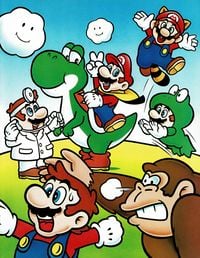 Artwork depicting various games of the Mario series: Donkey Kong, Super Mario Bros. 3, Dr. Mario and Super Mario World. The Mario series is the largest video game franchise in existence, and has had a lifespan of almost thirty years. It is often considered to be the greatest video game series of all time, receiving many high-scoring reviews on their various games.[13] In the series, many games have been considered to be the best of their time by players.[14] However, the series has been considered to have some games of lower quality.[15] An example is the Mario Party sub-series; after the release of Mario Party 3, the series is considered to have lost its flair, as the games often contain the same mechanics.[16] Super Mario Bros. was declared to be the greatest video game of all time twice: once by IGN in 2003, and the other time by GamesRadar in 2000.[17] The Mario cartoons also were shown to have received good reviews.[18][19][20] Though each of the series were short-lived, they were considered to be highly popular, attracting an audience of children to each episode.[21] Even with the success of the games and cartoons in the series, there was still a large production that attracted a lot of negative reviews. The Super Mario Bros. film is often considered to be a great failure. The film took over a $20 million gross loss in profits. Bob Hoskins, who played the role of Mario in the film, was recorded saying that the movie was a "nightmare". In the May 2006 issue of Nintendo Power, an interviewee from the magazine had said, "Yes, it happened. Let us speak no more of it." Cultural ImpactThe Mario series has been referenced many ways throughout the years. From animation to music, and from the internet to other video games, the Mario series has culturally impacted many people. In animation, Mario characters and elements have appeared in such shows as The Simpsons, The Ren and Stimpy Show, and The Fairly OddParents. In films, the Mario series has been referenced in such titles as Billy Madison and Ghostbusters II. Not many references have been made to the Mario series in music, but some songs have been dedicated to the popular series, such as the song "Birdo" as performed by Horse the Band. The Mario series is highly popular on the internet. Many websites have dedicated themselves to the series in some way, while others poke fun at the series. On Youtube, there are thousands of videos poking fun at one of the greatest blunders of the Mario series, Hotel Mario. The popular website, Newgrounds, has many fan-made games, like the popular Super Mario Bros. Z, that are Mario-themed in some way. Many comics and books have also referenced the Mario series, or are completely centered around them. In television, the Mario series has been referenced in such shows as The Fresh Prince of Bel-Air and My Name is Earl. The Mario series has been referenced more times in video games than in any other form of publication. Many games created by Nintendo, such as Animal Crossing make very notable references to the Mario series. Even games on non-Nintendo consoles, such as Banjo-Kazooie: Nuts & Bolts, have referenced the Mario series in some way. The Mario series has also been referenced in commercials as well as other theatrical productions. External LinksReferences
|
